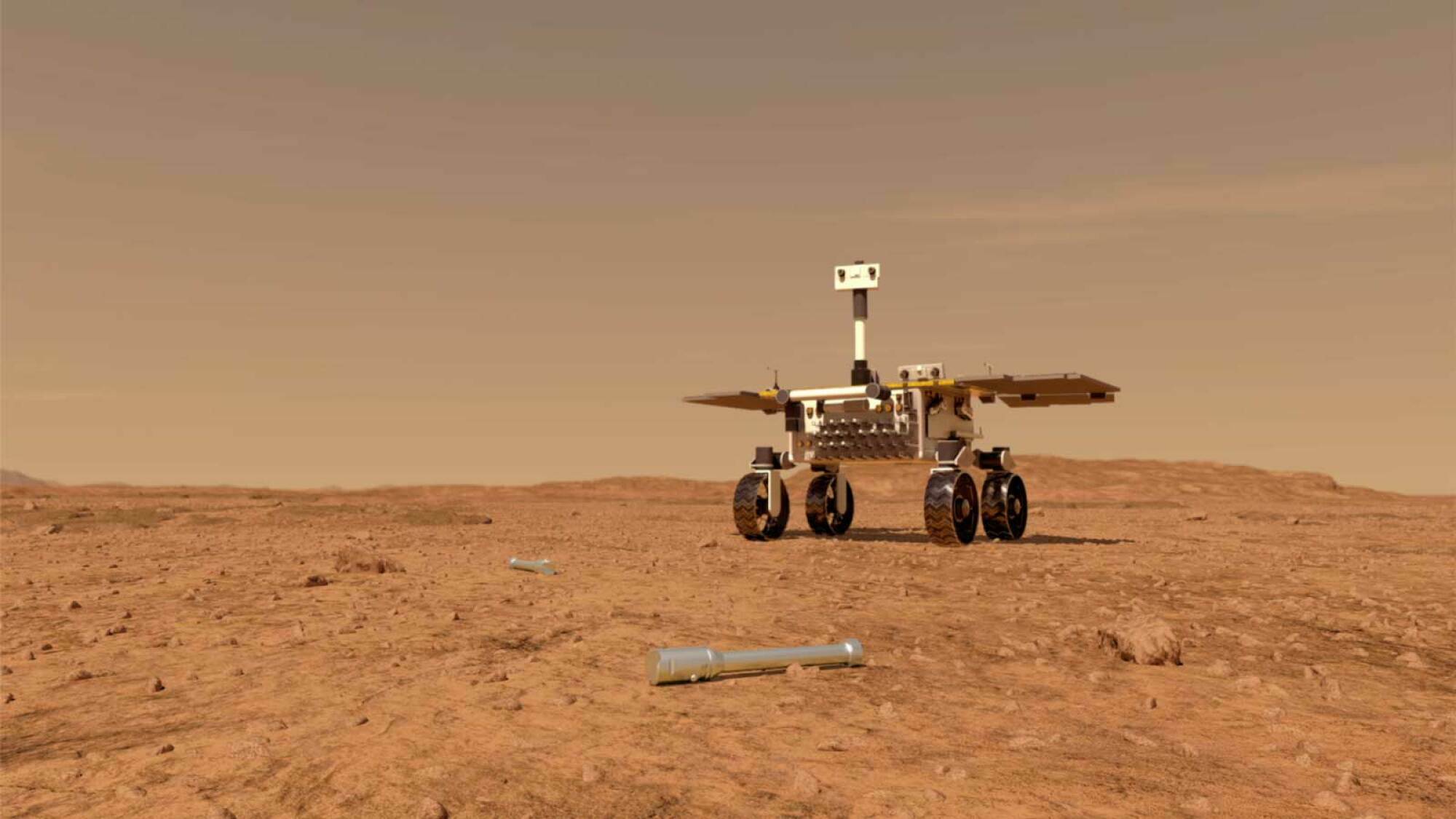
As the Perseverance rover rumbled over Mars terrain scoping out rocks, seven companies spent the summer trying to figure out how to help NASA bring its samples back to Earth.
The U.S. space agency’s mission to return bits of rock, dust, and even air from the Red Planet, known as Mars Sample Return, is in trouble. An independent review found the unprecedented project would cost upward of $11 billion and take nearly two decades to accomplish.
Problems with the mission’s management came at the worst possible time. Hundreds of scientists and engineers working on the project at NASA’s Jet Propulsion Laboratory lost their jobs, taking the brunt of NASA’s budget cuts over the past two years.
In a desperate plea, NASA announced that it would solicit proposals from the aerospace industry, in addition to asking its other campuses, for input on how to save the mission. Then in June, NASA selected seven companies out of 48 proposals to flesh out their concepts over the following three months: Lockheed Martin, SpaceX, Blue Origin, Aerojet Rocketdyne, Northrop Grumman, Quantum Space, and Whittinghill Aerospace received up to $1.5 million each to pursue studies.
From repurposing moon landers in development for NASA’s Artemis campaign to rethinking the last leg of the journey, the companies have put forward some new strategies and approaches, often involving their own hardware, according to public records reviewed by Mashable.
“Mars Sample Return will be one of the most complex missions NASA has undertaken, and it is critical that we carry it out more quickly, with less risk, and at a lower cost,” said NASA Administrator Bill Nelson in a statement. “I’m excited to see the vision that these companies, centers and partners present as we look for fresh, exciting, and innovative ideas to uncover great cosmic secrets from the Red Planet.”
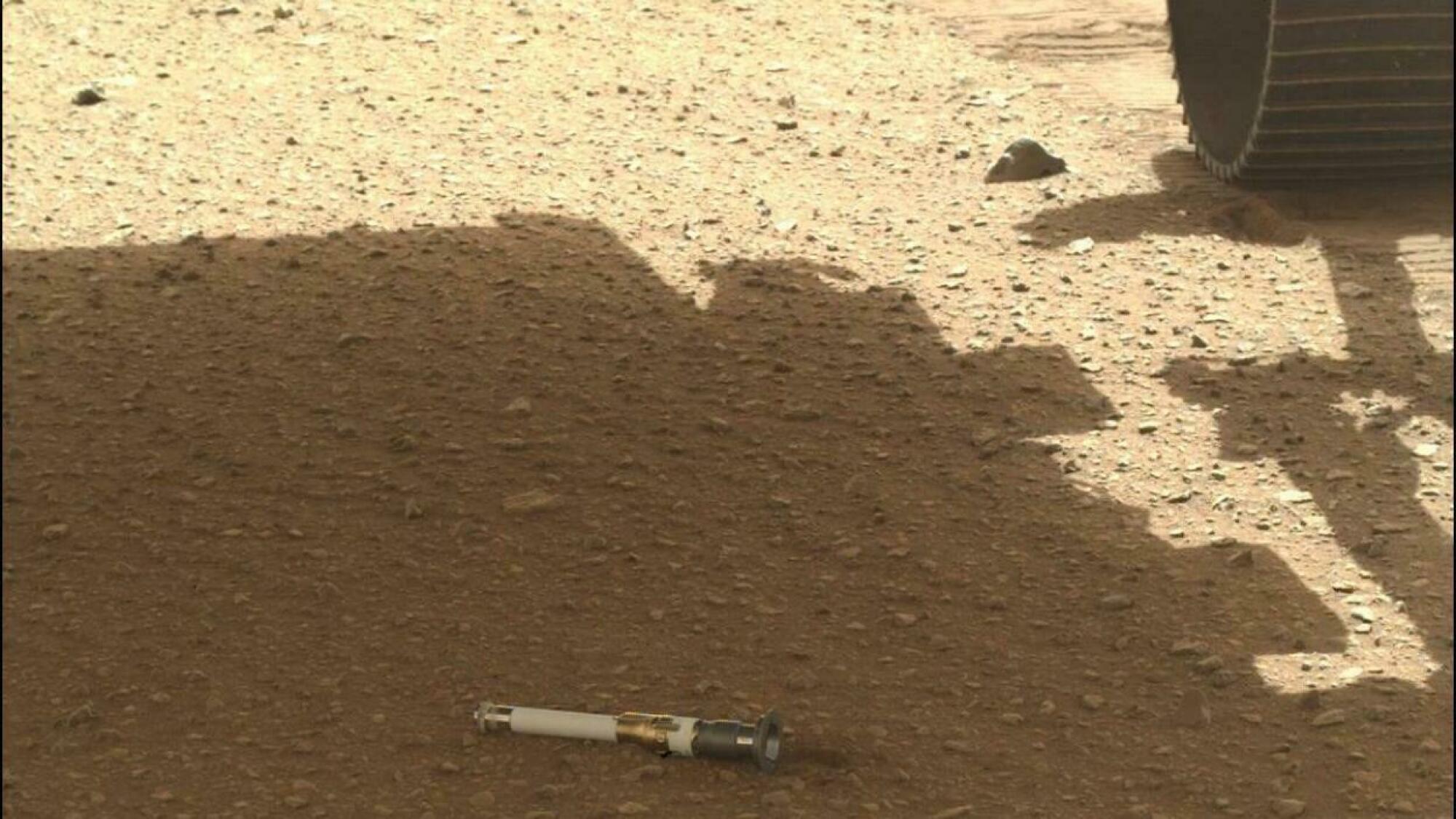
Credit: NASA / JPL-Caltech
Since landing on Mars in 2021, Perseverance has filled 25 of 38 sample tubes with rocks and dirt. NASA’s goal has been to retrieve at least a few of them and get them to Earth in the 2030s. To do that, the agency planned for the rover to deliver the samples to a robotic lander equipped with a rocket. If the rover couldn’t make the drive, drones similar to the recently deceased Ingenuity helicopter would pick them up and fly them to a lander.
Once the tubes were in space, an orbiter built by the European Space Agency would bring them some 140 million miles back to Earth. (With both planets constantly moving, their distance is always changing.)
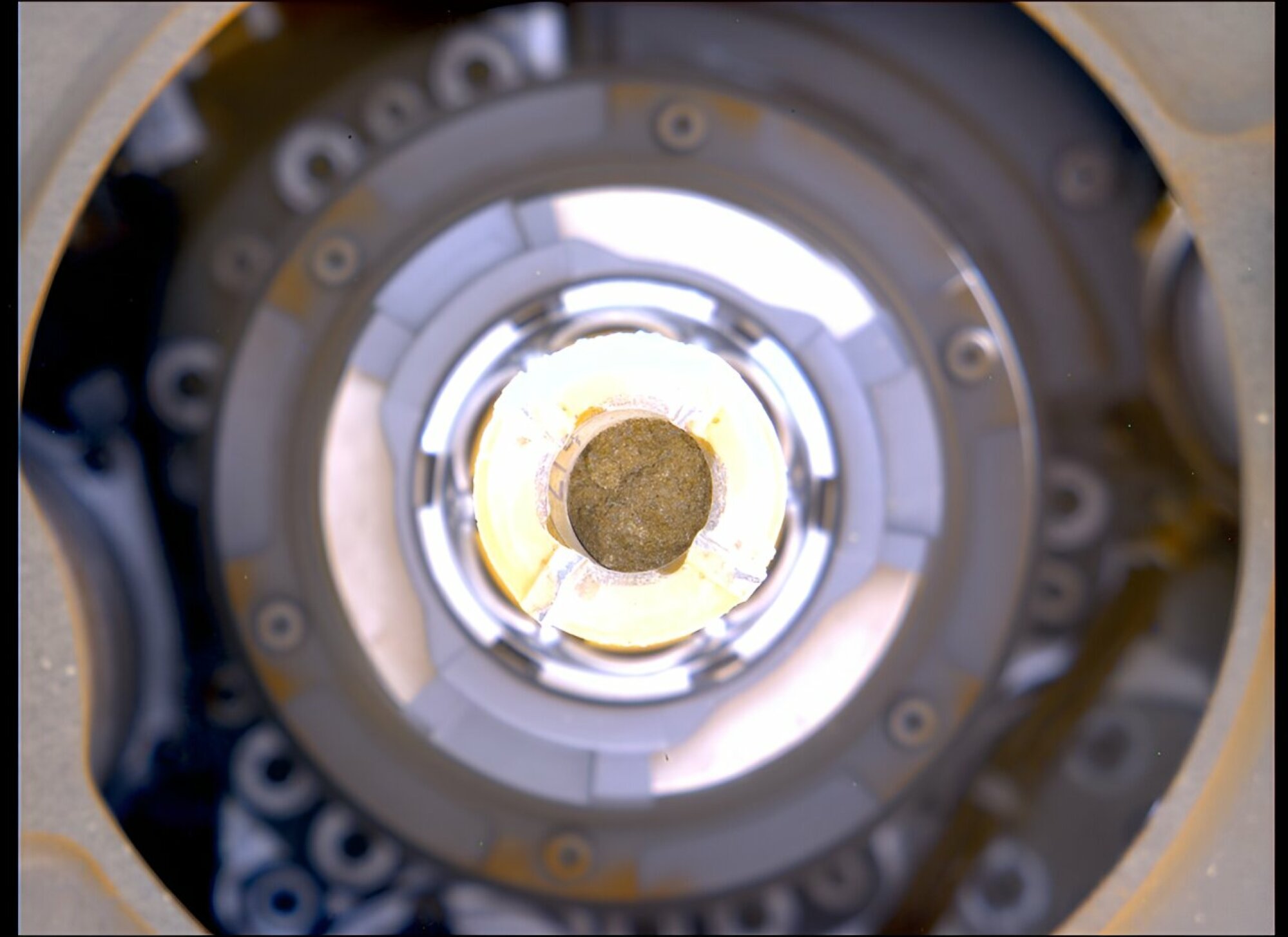
Credit: NASA / JPL-Caltech / ASU / MSSS
The pressure to find a solution has only increased since July, when NASA announced that Perseverance had just discovered in an ancient dried-up riverbed a leopard-spotted rock, with features that microbes could have formed billions of years ago, when the planet was warmer and wet.
Though NASA stopped short of claiming it had found evidence of life, the rover’s instruments detected organic compounds within the rock that are, at the least, building blocks for life in this world. But the only way to know for sure whether those compounds came from living creatures or a geological process is to grab a sample and bring it home for a rigorous analysis.
“It’s kind of a reminder that no one is going to care if it costs $6 billion or $11 billion if we discover evidence of life beyond Earth for the first time in human history,” Casey Dreier, the nonpartisan Planetary Society’s senior space policy adviser, told Mashable.
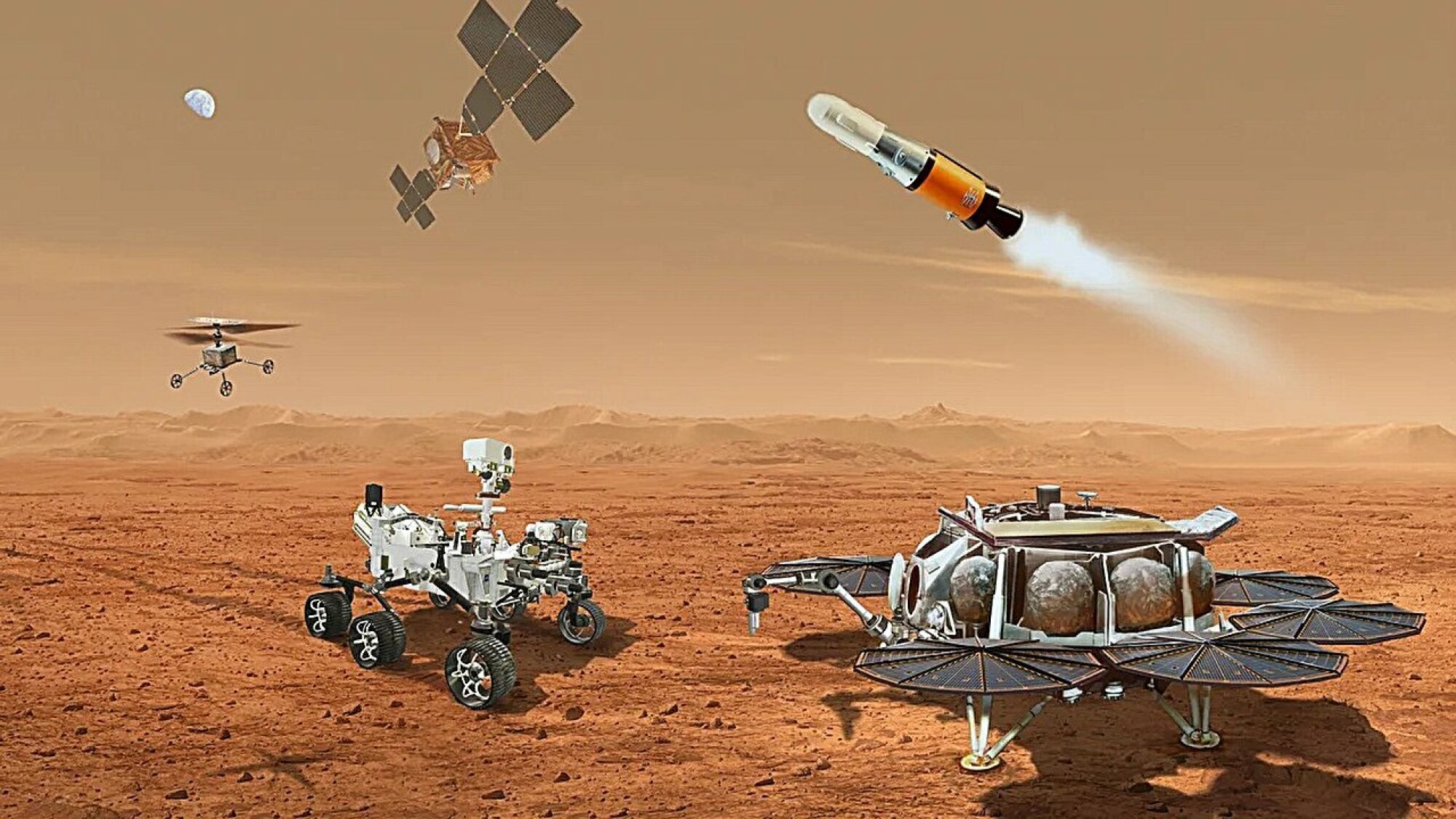
Credit: NASA
How private companies would change the mission
A Mashable review of the proposal summaries shows many of the ideas suggested by the seven companies focus on the Mars Ascent Vehicle, the rocket that would blast the samples off Mars and into space — a sign that insiders may have identified the MAV as one of the key problems. The mission would mark humanity’s first attempt at launching off another planet. Aerojet Rocketdyne, Whittinghill Aerospace, and Northrop Grumman’s proposals all pitch ways to make that rocket — and the lander bringing it down to the surface — lighter and smaller.
Aerojet Rocketdyne went a step farther, urging that if NASA were to reduce the mass of the Mars rocket, the team could potentially reuse the sky crane landing system that brought the Perseverance and Curiosity rovers to the Martian surface for this mission.
Lockheed Martin is looking into how NASA could model the mission after some of its Discovery and New Frontiers-class planetary missions, according to its proposal, which are cost-capped in the millions-of-dollars range. These relatively frugal missions involve private space company partners and are pre-authorized by Congress, generally making them quicker to develop.
And, of course, Lockheed thinks it’s up to the task. The company said it would assess how replacing government equipment, as well as reducing the number of samples collected, could help drive down costs. Lockheed has a long track record of developing 11 Mars vehicles for the agency in the past, said Lisa May, the company’s manager of deep space exploration strategy, in a statement to Mashable.
“It’s kind of a reminder that no one is going to care if it costs $6 billion or $11 billion if we discover evidence of life beyond Earth for the first time in human history.”
The newcomer space companies are also part of the mix. Elon Musk‘s SpaceX wants Starship to be incorporated somehow into the mission architecture, and Jeff Bezos’ Blue Origin is looking into how NASA could leverage the company’s own Artemis moon lander, dubbed Blue Moon. Either spacecraft could potentially carry a heavier load than the lander and rocket in development, ensuring the agency wouldn’t have to make difficult choices about which samples to leave behind on the Red Planet.
While most of the concepts seem to be centered on cost savings in the samples’ retrieval, Quantum Space’s proposal seeks to redesign a much later part of the journey. Its plan would involve a handoff of the samples from the European orbiter to Quantum’s own moon-orbiting spacecraft that would eventually drop the samples over Earth for a Utah desert landing. The company is calling this its “anchor leg concept” — a way to cut back on near-term costs of the mission, according to Quantum.
“The use of our commercially developed spacecraft to achieve one of the highest priority goals in solar system exploration exemplifies a successful private-public partnership,” said Ben Reed, Quantum’s co-founder and CIO, in a statement. “Our sleeves are rolled up, and we’re ready to dive in!”
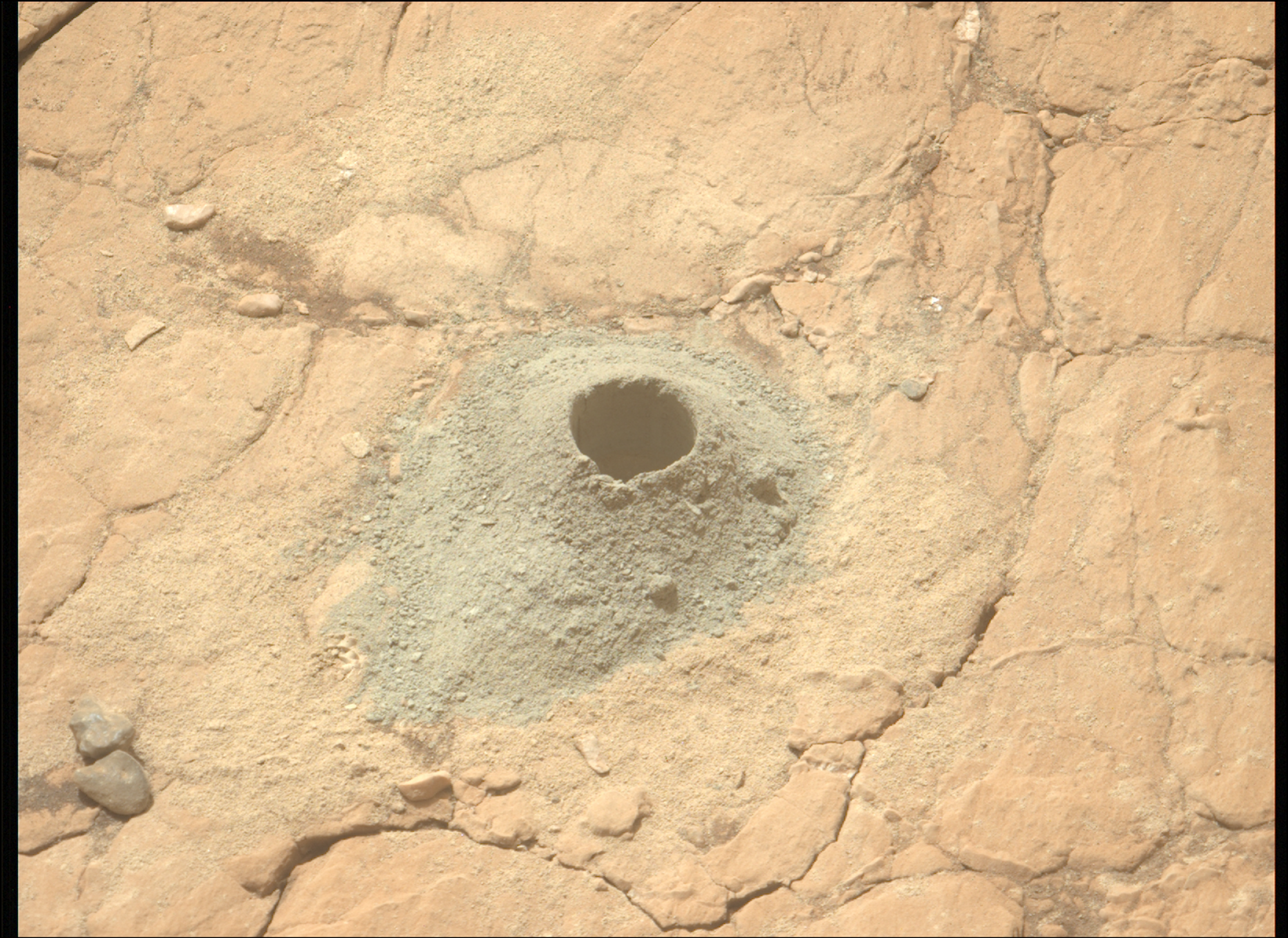
Credit: NASA / JPL-Caltech / ASU
Why Mars Sample Return is in jeopardy
NASA and the broader scientific community have pushed for Mars rocks since 1978, after the success of the Viking mission, said Dreier of The Planetary Society.
In order to insulate Mars Sample Return from inconsistent support from Congress, NASA designed and organized this science endeavor like it would a human spaceflight program, with its development spread across all NASA campuses and jobs posted throughout the country. But that approach apparently resulted in in-fighting, he said: Changes to one vehicle or phase of the mission at one NASA center would then have cascading repercussions, necessitating redesigns on other parts being developed at other centers.
And with a lack of big-picture messaging on the significance of the mission, Mars Sample Return never enjoyed the sort of political buy-in that, for example, kept lawmakers focused on getting moon missions to the finish line in the past, Dreier said. But he’s cautiously optimistic that NASA’s desire to address the issues now will get the project back on track.
“NASA’s trying to find ways to break through the bureaucratic management inertia that had settled on the program, that was just dragging it down,” he said. “I think this is a near-death experience that might shake everyone out of complacency.”
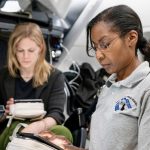



















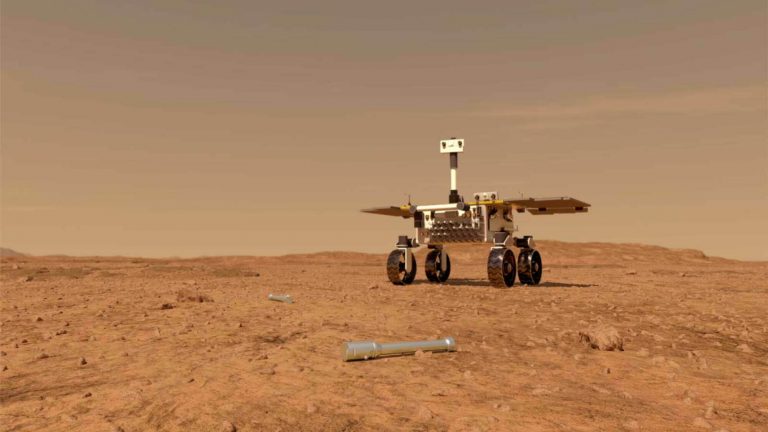

0 Comments